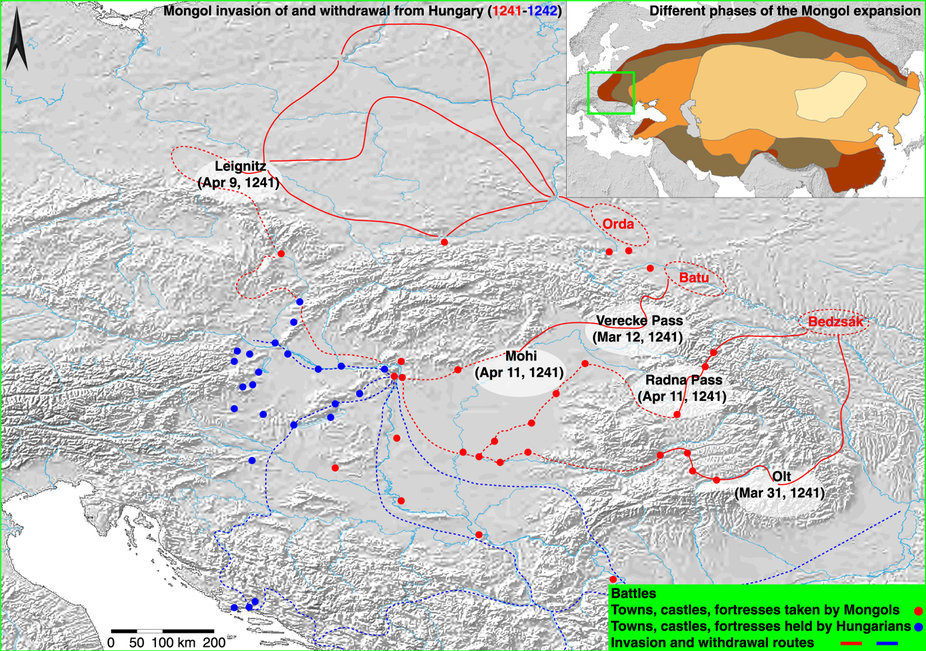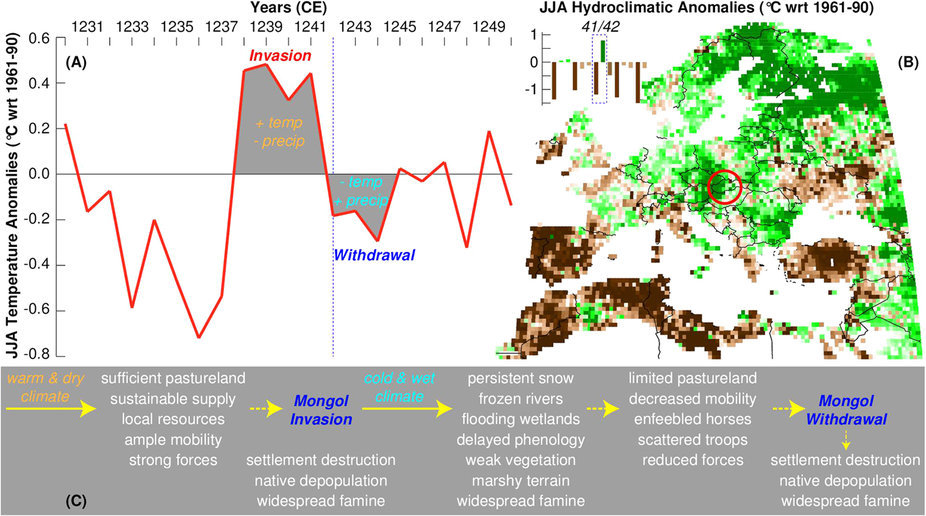The invasion of the Mongol Empire in Hungary was accompanied by a sharp climate change.

The capture of Europe by the Mongols at the beginning of the 13th century is an extremely important and fateful topic in our history, since this event determined the development of the region for centuries to come. The principalities paid tribute until the 15th century, the Russian princes traveled to the capital of the Horde, sometimes lived there for years (like Alexander Nevsky in 1247-1249), before returning home, receiving the label. Some historians believe that the advanced military art of the Mongolian empire , the desire for military seizure of vast territories (11 million km 2 ) and the collection of tribute, as well as culture, significantly influenced the development of Russia.
The countries of Western Europe were devoid of the influence of the Horde. The invasion of the Mongol-Tatars in 1241-1242, unexpectedly stopped in Hungary and Poland, although the Mongolian army had hardly known defeat before. There were several important reasons for this, and now scientists have added another small detail: a sharp climate change in 1241-1242 , at the height of the hostilities.
The historical map above shows the Hungarian cities, castles and fortresses captured by the Mongols, the invasion routes and the retreat routes in 1241-1242.
')
As you can see, the troops quickly moved west in March-April 1241, cut out a huge number of Hungarians, but then suddenly stopped the operation, and then decided to retreat. They never returned to Europe again.
Scientists from the Federal Research Institute of Switzerland in Birmensdorf and Princeton University (USA) investigated the climate in Eastern Europe in 1241-1242 using the standard dendrochronology method, analysis of annual rings of trees. It turned out that during this period in Europe there was a sharp change in climate: a cold snap and heavy rain.

The fact is that the overwhelming part of the Horde army was cavalry. Scientists believe that heavy rains and flooding in 1241-1242 played an important role, because "they reduced the number of pastures and mobility, and also reduced the military effectiveness of the Mongolian cavalry," according to scientific work.
For the siege of cities, the Mongols used Chinese siege catapults, as well as heavy triple crossbows that served at least 100 people. The Chinese managed to get the technology that was not yet known in Europe - gunpowder. The Mongols rather quickly seized cities and castles, using Chinese siege weapons and shells filled with gunpowder and other combustible materials. But despite the high-tech artillery, it was the cavalry that remained the main force of the Mongol-Tatars.
Of course, one cannot say that only the rains saved Europe from ruin by the Mongols. But as the experience of the following centuries has shown, unexpected climate change can make serious changes in the balance of power. Climate must be taken into account when planning operations, as well as the logistics of food supplies, equipment, ammunition supply and other essential elements of a military campaign.
Scientific work on the climatic and environmental aspects of the retreat of the Mongol Empire from Hungary in 1242 was published on May 26, 2016 in the journal Scientific Reports (doi: 10.1038 / srep25606), free access.
Source: https://habr.com/ru/post/394711/
All Articles